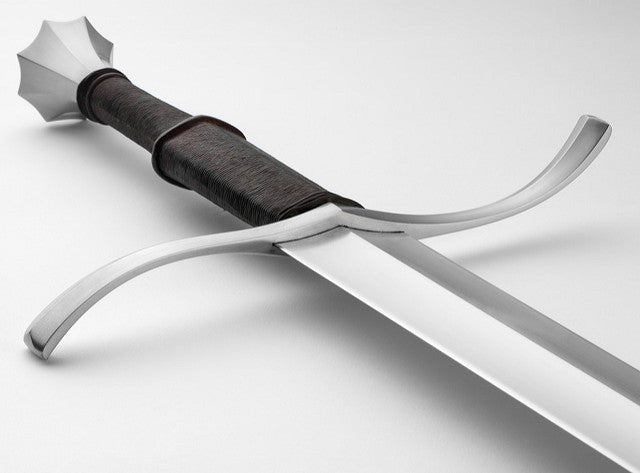Your Cart is Empty


The Japanese katana and European longsword are two of the most distinguishable swords in history.
The Longsword
The longsword (depicted to the left) is a two-handed sword that originated out of medieval Europe. It's characterized by a straight double-edged blade, usually around 33 to 43 inches (85 to 110 cm).
In addition to a longer-than-an-average blade, the longsword also has a longer grip to allow for two-handed use. According to some reports, the handle of a longsword often measured 10 to 15 inches (25.4 to 38.1 cm). It was also quite heavy, with the standard medieval variant weighing up to four pounds. Of course, the added weight allowed for greater power, though at the cost of speed and maneuverability.
The longsword was primarily used for cutting and slicing. And because it was double-edged, it allowed for a high level of versatility on the battlefield.
The Katana
The katana is a traditional Japanese sword with origins dating back to the Japan's feudal period. Unlike its longsword counterpart, the katana featured just a single edge, usually measuring about 23 to 28 inches (58.42 to 71.12 cm). Why did swordsmiths decide to forge a sword with just a single edge instead of two?
There's actually a good reason for this: differential hardening. As we've discussed in previous blog posts, the katana and several other traditional Japanese swords are made with a forging technique known as differential hardening. The basic idea is to make the sharp edge of the blade cool more quickly than the opposite edge, creating a strong sharp edge while leaving the opposite edge somewhat flexible.
Another distinguishable difference between it and the longsword is the use of a curved blade. The longsword features a completely straight blade, while the katana has a slight curve to its blade. Basically, this curvature improves cutting power by reducing vibrations.
Historians believe the katana because became popular due to the shifting towards close-combat warfare. Samurai warriors could draw the katana more quickly than previous generations of Japanese swords, giving them a competitive edge against their opponents.
In Conclusion...
Comparing the katana to the longsword is like comparing apples to oranges. Each one is unique with its own defining characteristics. The longsword is a longer, heavier sword with more stopping power, while the katana is a shorter, lighter sword with a stronger cutting edge.
Hopefully, this gives you a better understanding of the nuances between the longsword and the katana.
Photo credit: Søren Niedziella